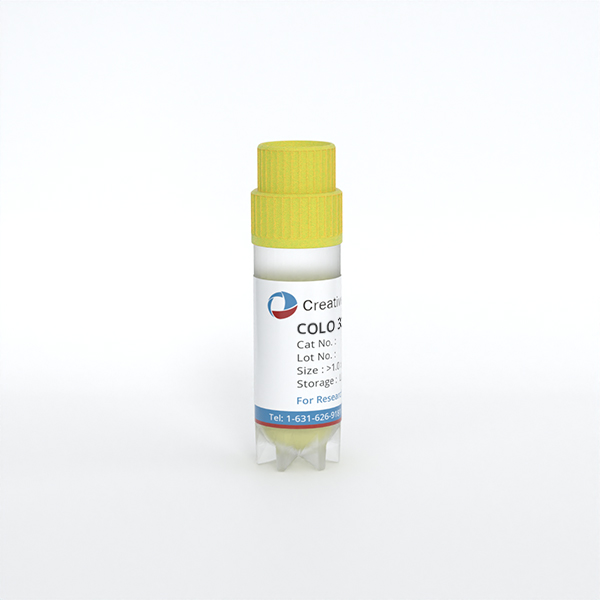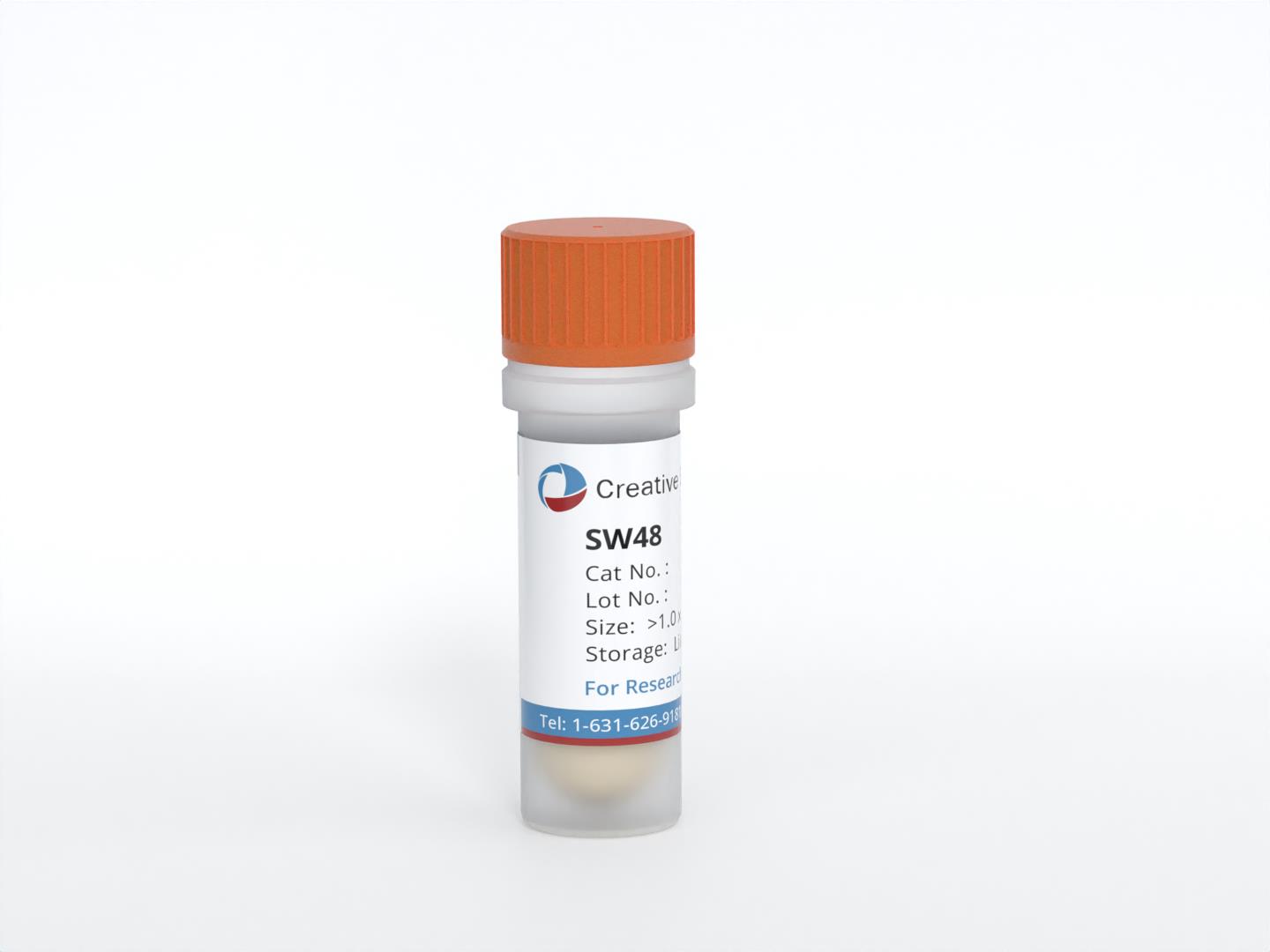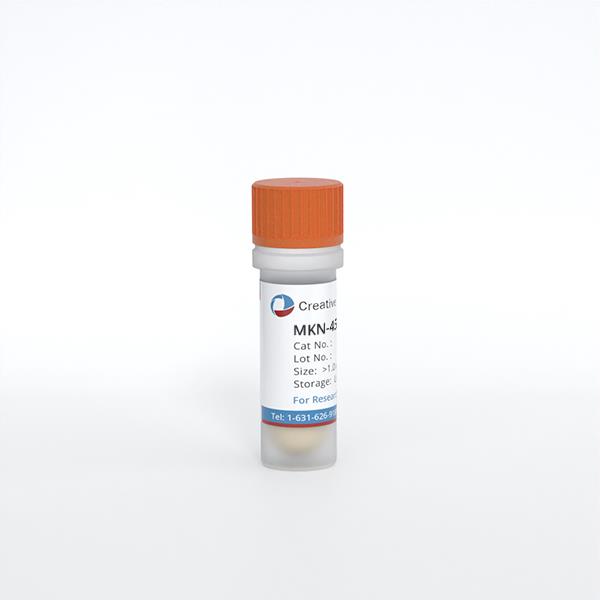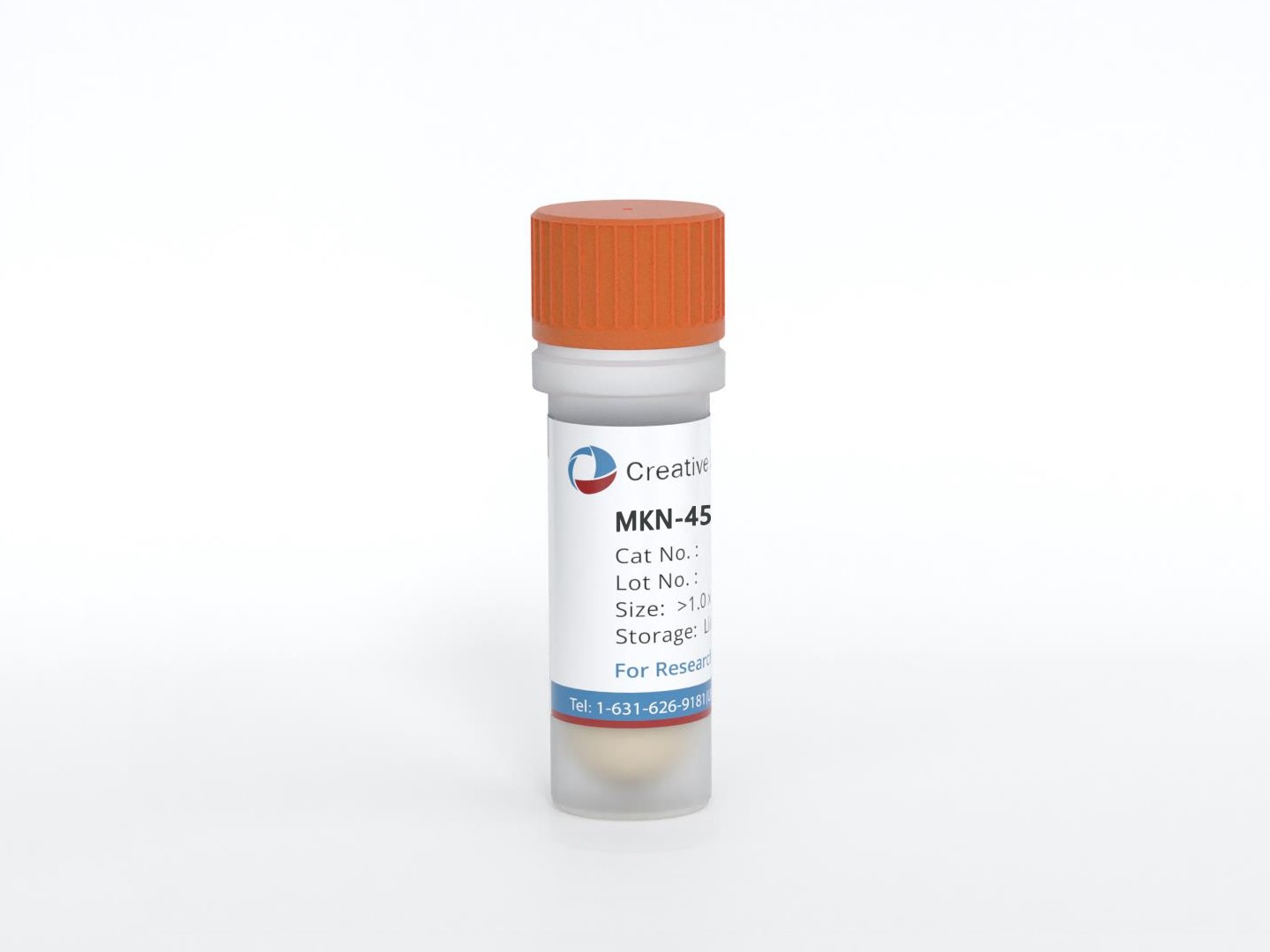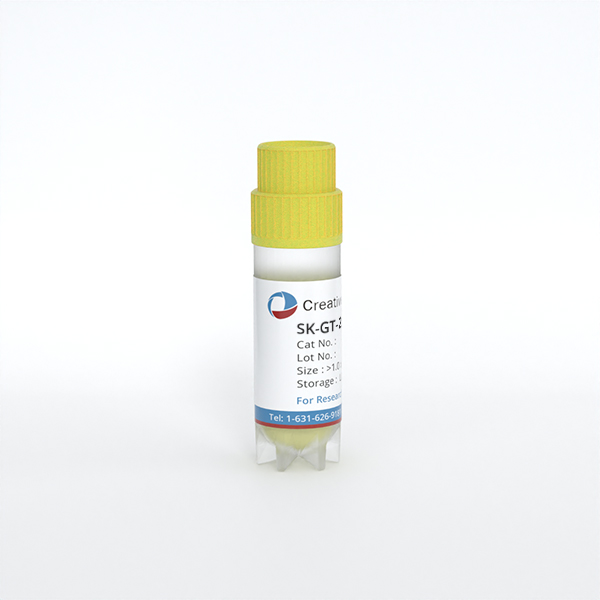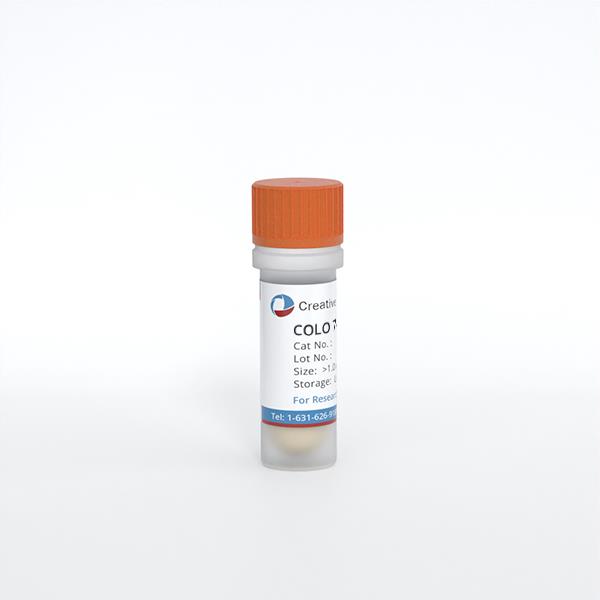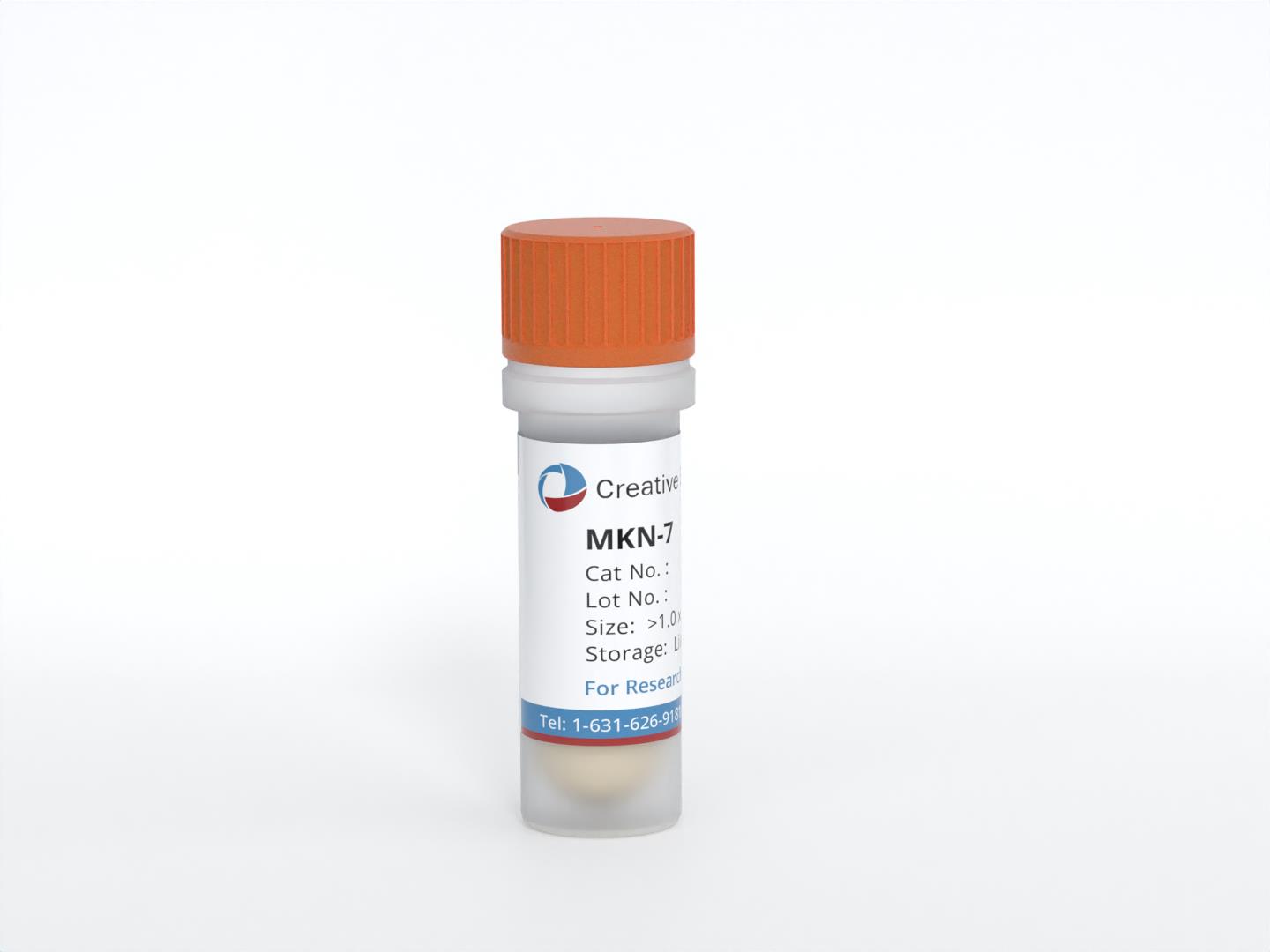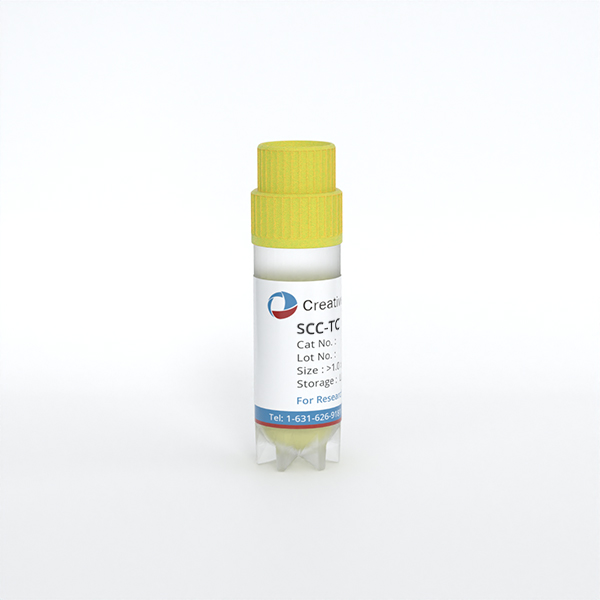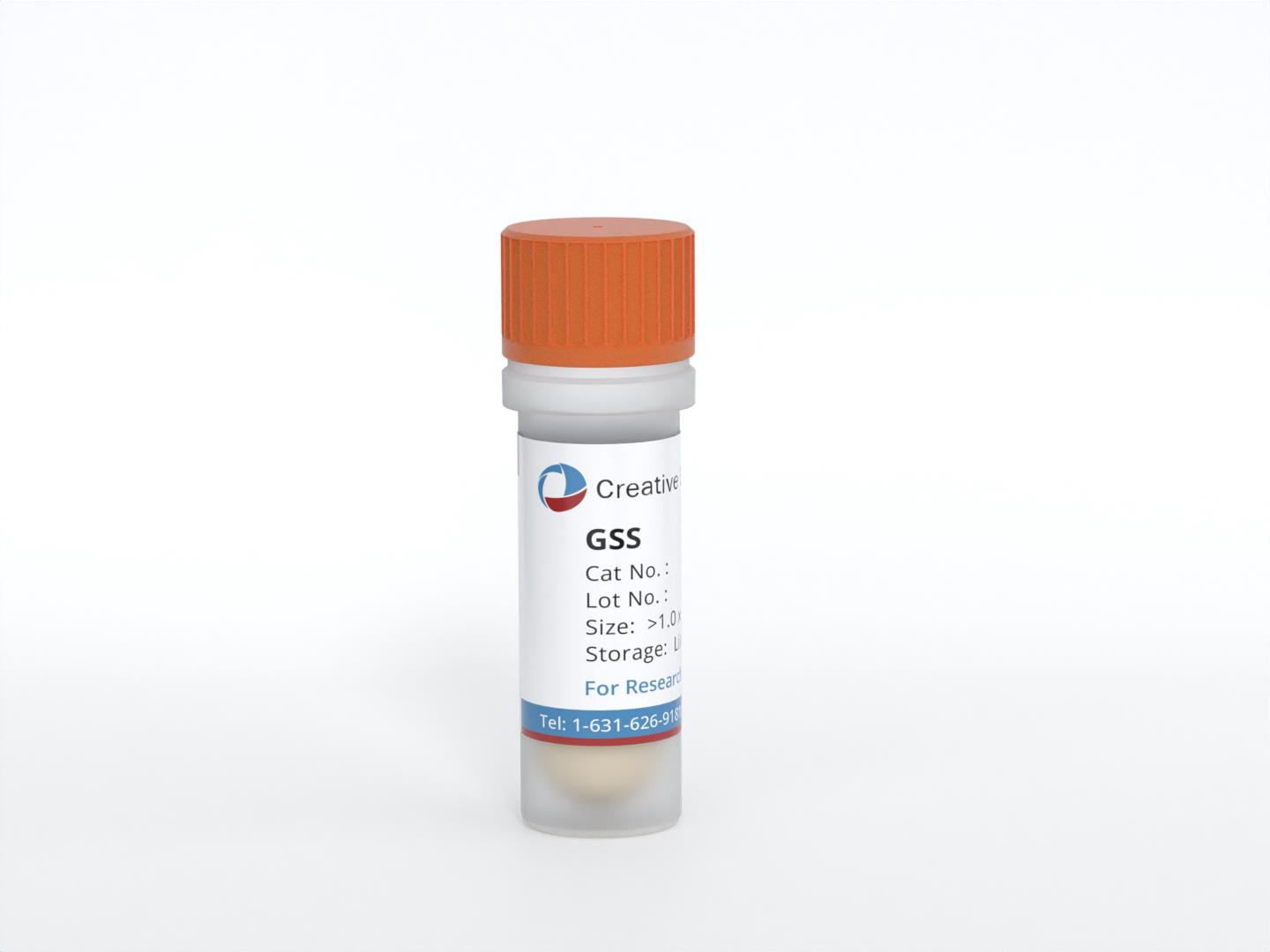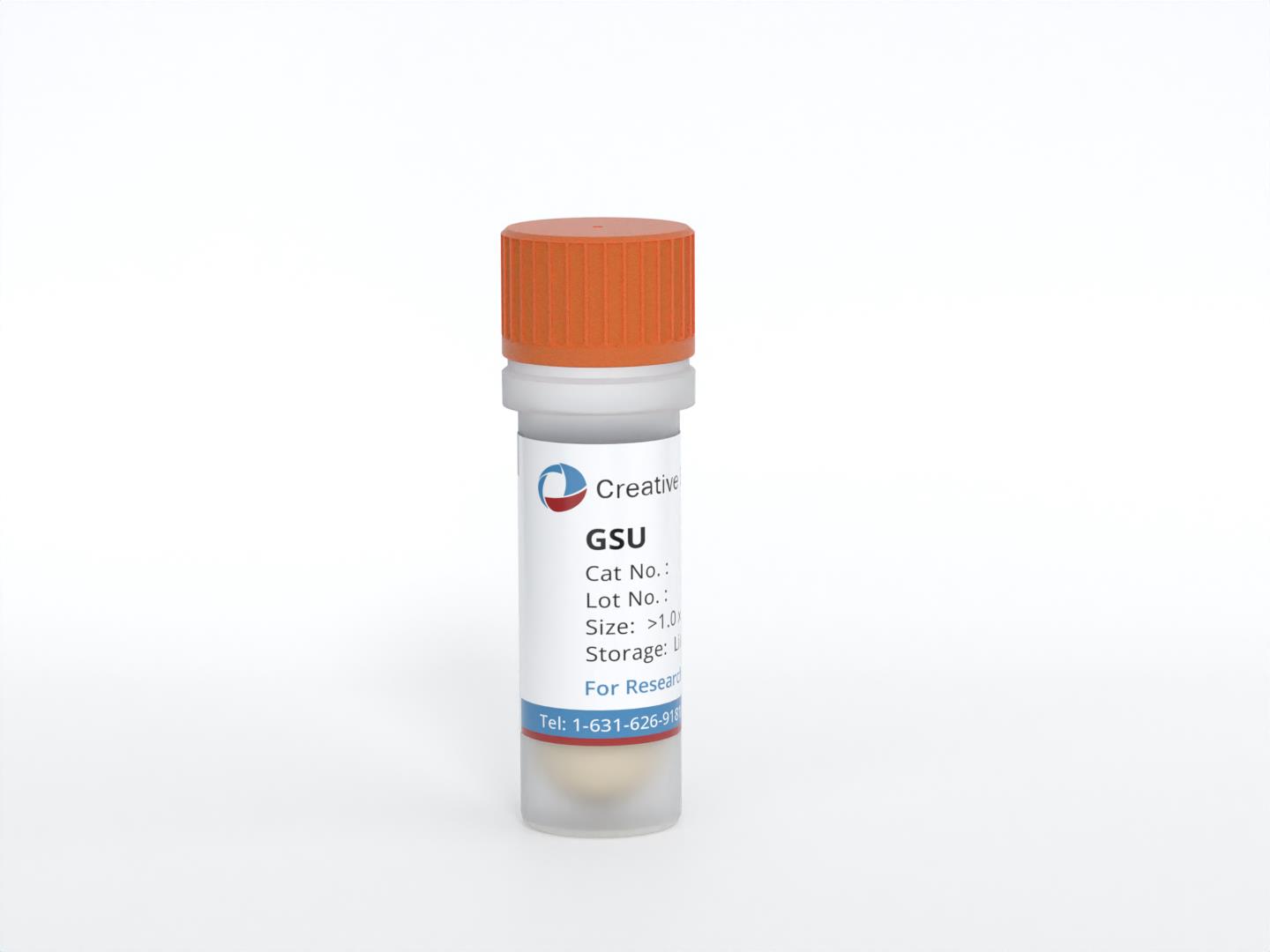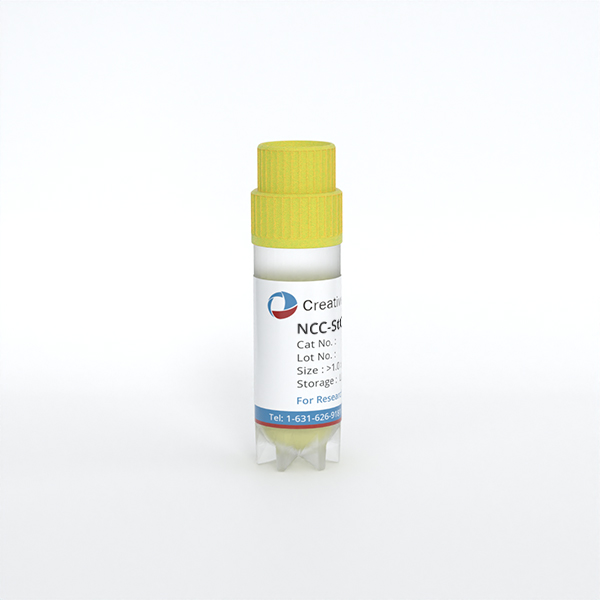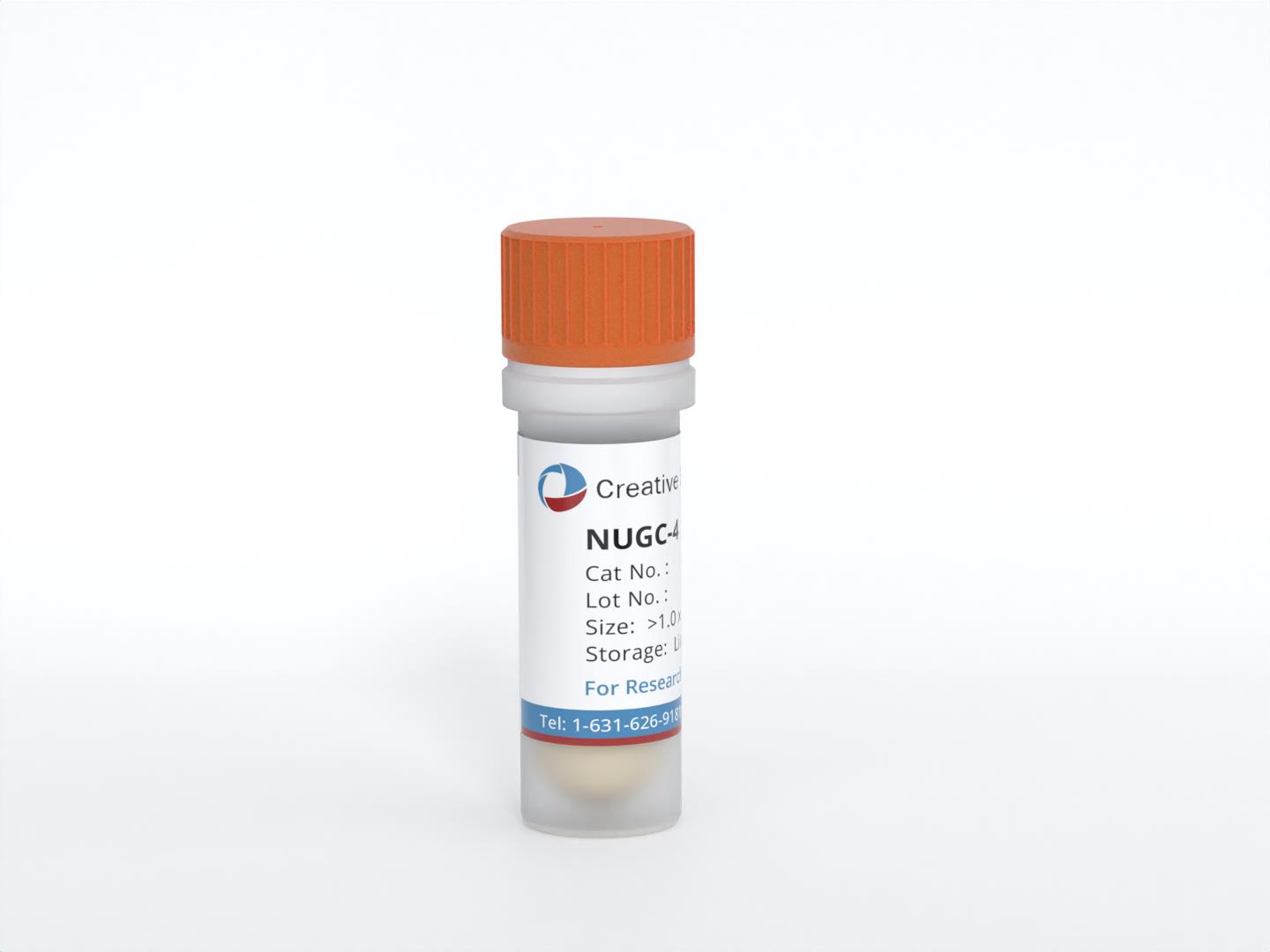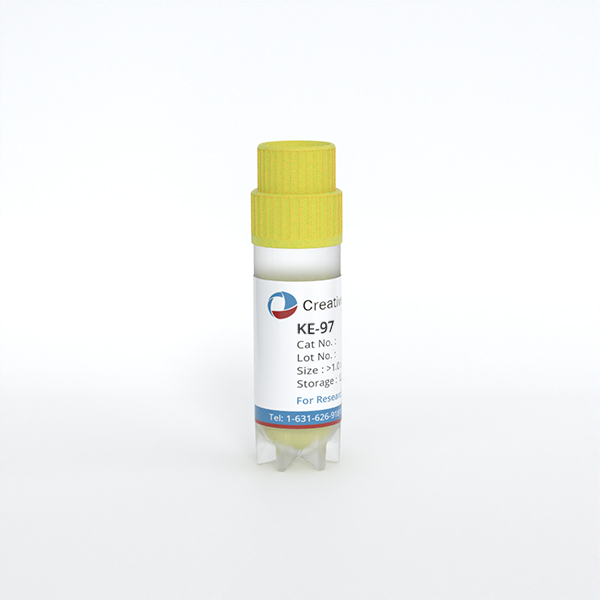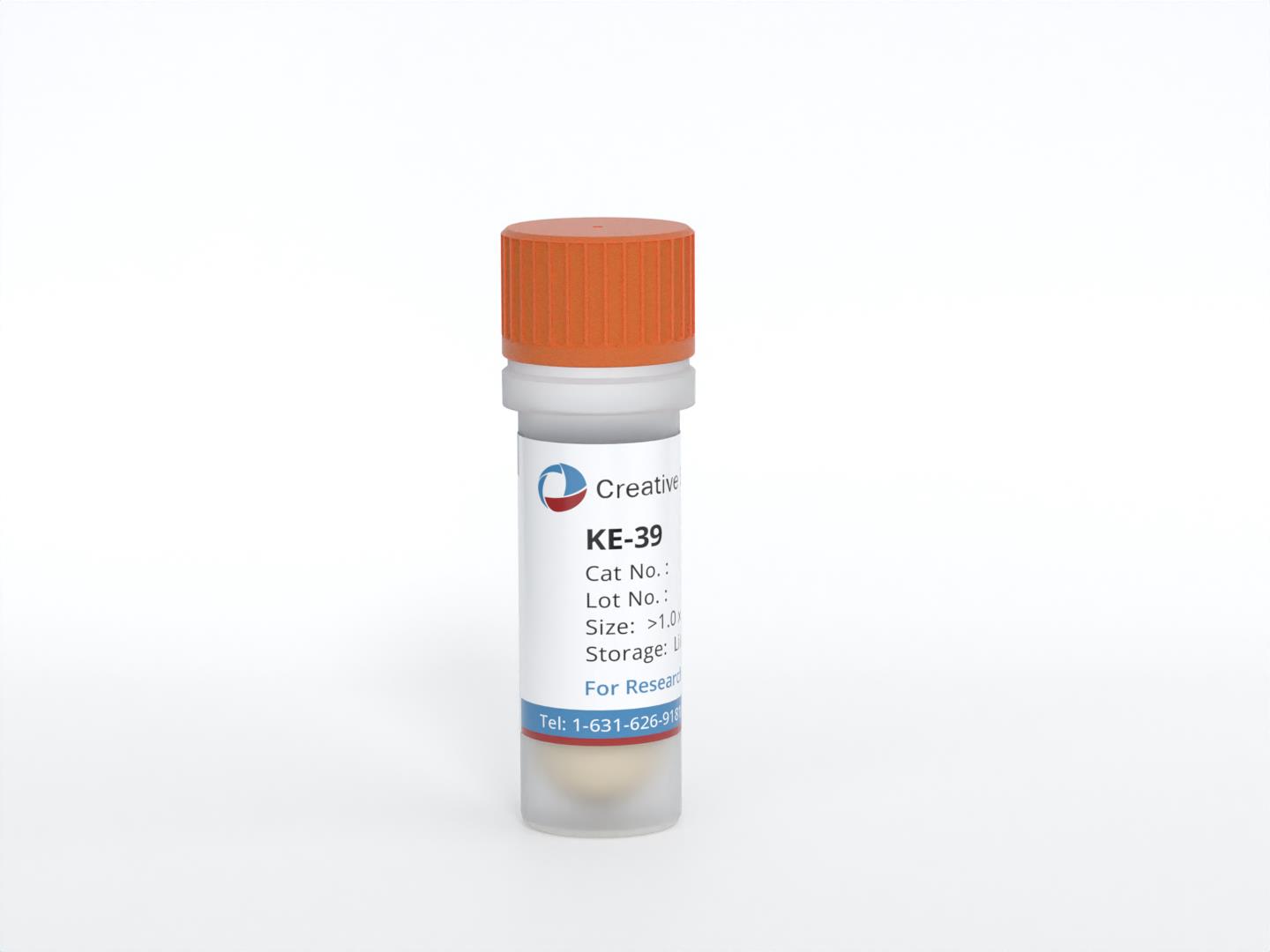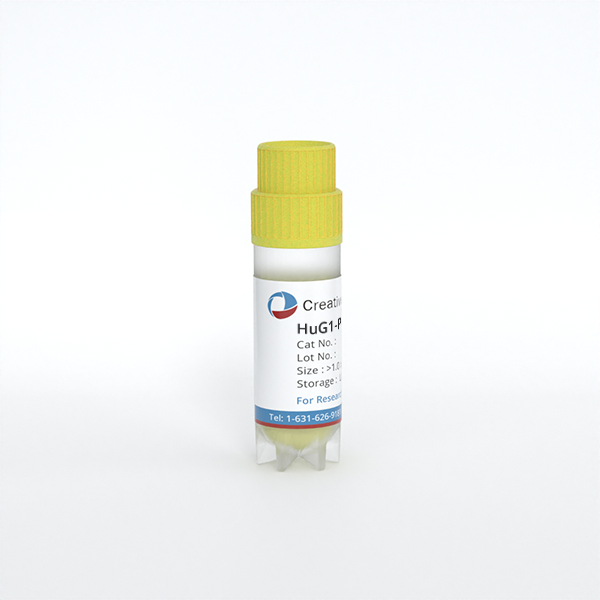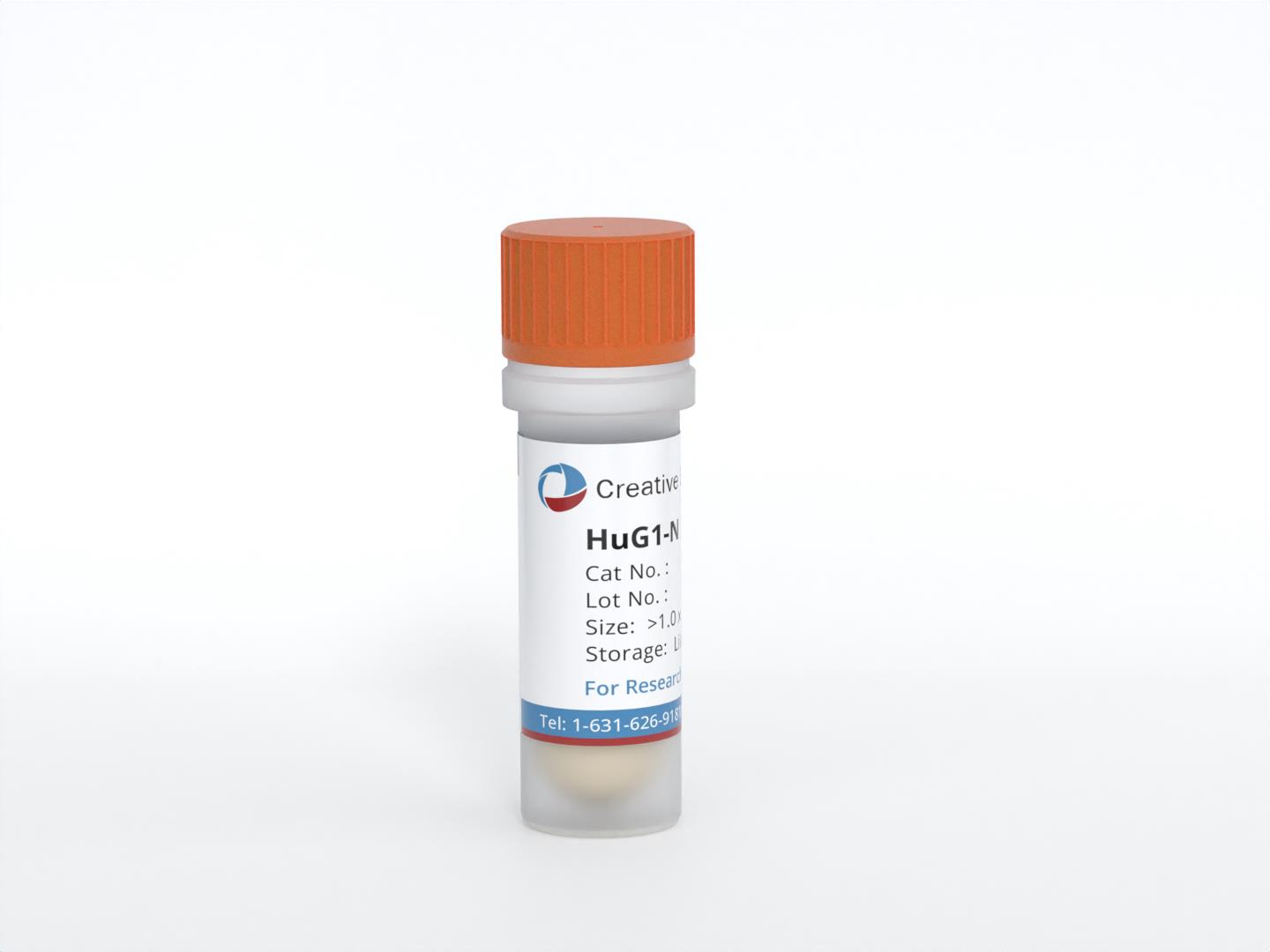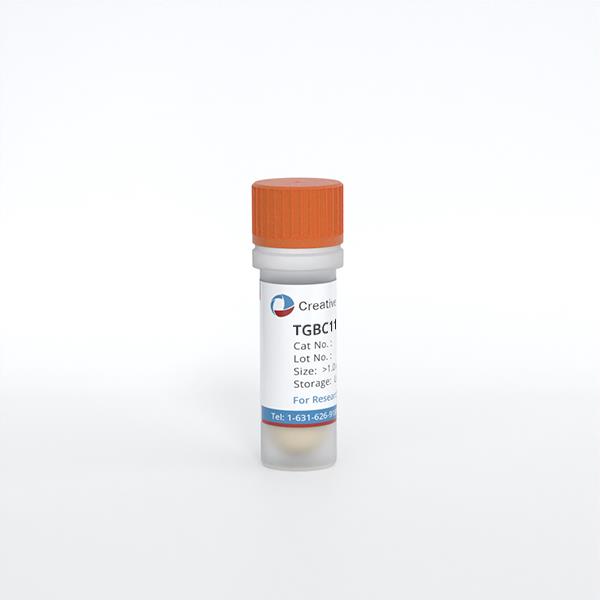Gastric Tumor Cells
- Background
- Applications
- Scientific Data
- FAQ
Gastric tumor cells are the basis of gastric cancer (GC), which is one of the five most common malignancies and the third leading cause of cancer mortality worldwide. Despite the significant advancements in treatment, the prognosis for GC patients remains poor, primarily due to frequent relapse, metastasis, and drug resistance.
These cells are abnormal cells that grow uncontrollably in the stomach, forming a tumor. They can originate from different parts of the stomach, leading to different types of GC. The exact cause of their formation is not fully known, but it is believed to involve a combination of genetic factors, environmental factors, and infection with certain types of bacteria, such as Helicobacter pylori.
Gastric Tumor Cell Characteristics
- Cellular morphology and phenotypic features. Gastric tumor cells often exhibit altered cell shapes, sizes, and organization compared to normal gastric epithelial cells. They may display an increased nuclear-to-cytoplasmic ratio, irregular nuclear shapes, and prominent nucleoli. Gastric tumor cells can lose their polarized epithelial morphology and adopt a more dedifferentiated, mesenchymal-like phenotype. Aberrant expression of cell surface markers, such as adhesion molecules and growth factor receptors, is commonly observed in gastric tumor cells.
- Genetic and molecular alterations. Gastric tumor cells harbor various genetic and epigenetic changes that contribute to their malignant transformation. Commonly reported genetic alterations include mutations in tumor suppressor genes (e.g., TP53, ARID1A) and oncogenes (e.g., KRAS, HER2/ERBB2). Dysregulation of signaling pathways, such as the PI3K/AKT, RAS/MAPK, and Wnt/β-catenin pathways, is frequently observed in gastric tumor cells. Epigenetic modifications, including aberrant DNA methylation and histone modifications, can lead to the silencing of tumor suppressor genes and activation of oncogenes in gastric tumor cells.
- Tumor heterogeneity. Gastric tumors exhibit substantial heterogeneity both between different GC subtypes and within individual tumors. This heterogeneity is reflected in the diverse morphological, genetic, and phenotypic characteristics of gastric tumor cells.
In Vitro Cell Line Models
One of the primary applications of gastric tumor cells lies in the development and utilization of in vitro cell line models. These models, established from the tumor cells of GC patients, serve as invaluable tools for researchers.
By cultivating and maintaining these cell lines, scientists can closely study the behavior and properties of gastric tumor cells under controlled laboratory conditions. This allows for a deeper exploration of the underlying mechanisms that drive their proliferation, invasion, and metastasis, as well as the evaluation of the efficacy and specificity of potential anti-cancer compounds. The availability of these well-characterized gastric tumor cell lines has been instrumental in accelerating the drug discovery and development process, as they provide a reliable platform for high-throughput screening and preclinical testing of novel therapeutic interventions.
Biomarker Identification
Gastric tumor cells also play a crucial role in the identification and validation of biomarkers for GC. By analyzing the genetic, molecular, and phenotypic profiles of these cells, researchers have been able to uncover a range of potential diagnostic and prognostic markers. For instance, detecting specific genetic alterations, such as mutations in TP53 or HER2 amplification, in gastric tumor cells can serve as valuable indicators for disease diagnosis and risk stratification. Furthermore, the expression patterns of cell surface markers and secreted factors by these cells can provide insights into the progression and metastatic potential of gastric tumors.
Advancing Cancer Research
Beyond the clinical applications, gastric tumor cells have also been instrumental in advancing the fundamental understanding of cancer biology. Investigations into the signaling pathways, epigenetic modifications, and the tumor microenvironment factors that influence gastric tumor cell behavior have led to groundbreaking discoveries. These insights have not only expanded our understanding of GC but have also informed research on other types of malignancies, fostering a more comprehensive approach to cancer research and treatment development.
Cell State-Specific Transcriptional Patterns Associated With GC Uncovered by scRNA-seq
To examine tumor-associated expression programs at the single-cell level, primary gastric tumor samples were compared to normal tissues (n = 26 tumor; n = 10 normal). After random downsampling to ensure statistical equivalency (Fig. 1A), the proportion of epithelial cells in tumors was lower compared with normal tissues (P = 0.002), whereas myeloid cells in tumors were higher (P = 0.05). The proportions of lymphoid, plasma, and stromal cells were not statistically different between tumor and normal samples.
Compared with their cognate cell states in normal tissues, tumor-associated epithelial cells exhibited higher expression of multiple oncogenic gene signatures related to epithelial-mesenchymal transition (EMT), cell motility, and cancer signatures derived from previous GC single-cell RNA sequencing (scRNA-seq) studies (Fig. 1B; P < 0.0001). When the expression status of individual GC oncogenes was assessed (e.g., CEACAM6, EGFR, MET, CCND1, and KRAS) among the tumor epithelial clusters, the EpiInt1 tumor epithelial cluster exhibited the largest increase (Fig. 1C). Comparisons in a cell state-specific manner revealed that "chief cells" and "intestinal-type cells" showed the greatest differences in transcriptomic profiles between GC and their cognate cell state in normal gastric tissues (Fig. 1E; "chief cells": 1,232 genes/EpiC3 cluster; "intestinal-type cells": 775 genes/EpiInt2 cluster). Pathway analysis indicated that each tumor epithelial cluster shared both common upregulated modules relevant to cancer, but also cluster-specific tumor-associated modules. Among downregulated genes, the classic chief cell markers LIPF and PGA3 were among the top downregulated genes in tumor epithelial cells (Fig. 1F; P < 0.0001). Using spatial DSP, the loss of LIPF was confirmed in tumor epithelial cells (Pan-CK+) compared with normal samples (n = 13, P = 0.0035; Fig. 1G).
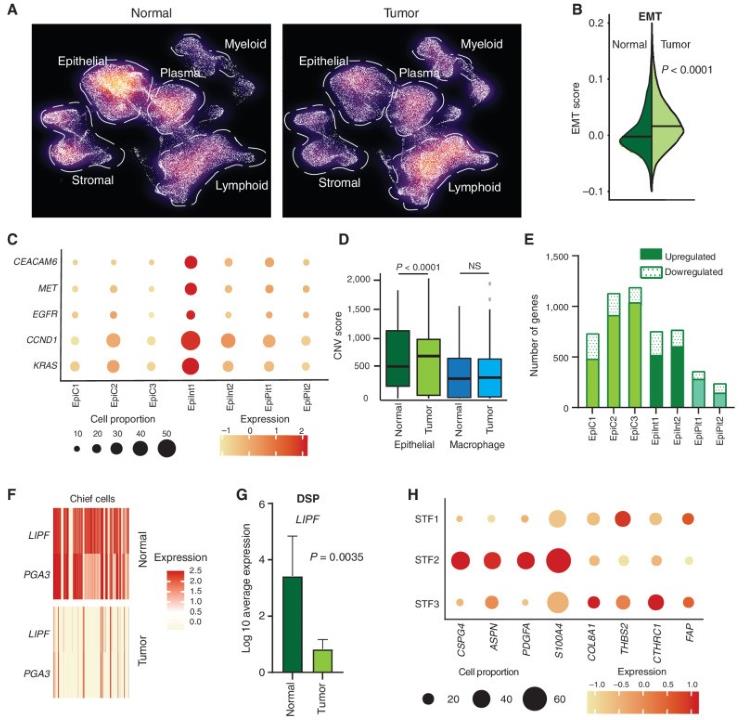 Fig.
1 scRNA-seq deconvolutes gastric tumor programs associated with distinct cell states. (Kumar V, et al,
2022)
Fig.
1 scRNA-seq deconvolutes gastric tumor programs associated with distinct cell states. (Kumar V, et al,
2022)
Neutrophils Promote Migration and Invasiveness and EMT of GC Cells
To study the effect of neutrophils on GC cells, a Transwell migration/invasion assay was used to explore the effect of neutrophils on the migration and invasion ability of GC cells. The results showed that neutrophils promote GC cell (MKN45 and MKN74) migration (P < 0.001 and P < 0.001) and invasion (P < 0.001 and P < 0.001) (Fig. 2a and b), when an IL-17a neutralizing antibody was added to the Transwell co-culture chamber, GC cell (MKN45 and MKN74) migration (P < 0.001 and P < 0.001) and invasion was decreased (P < 0.001 and P < 0.001) (Fig. 2a and b). Therefore, neutrophil promotes the migration and invasiveness of GC cells through IL-17a.
Western blot results showed that neutrophils promote the expression of EMT-related markers in GC cells (MKN45 and MKN74). E-cadherin expression was significantly decreased (P < 0.05 and P < 0.05 in MKN45 and MKN74 cells, respectively), and Vimentin (P < 0.05 and P < 0.05 in MKN45 and MKN74 cells, respectively) and ZEB1 (P < 0.05 and P < 0.05 in MKN45 and MKN74 cells, respectively) expression was significantly upregulated (Fig. 2c) when an IL-17a neutralizing antibody was added to the Transwell co-culture system, The expression of E-cadherin protein in the epithelium of GC cells was upregulated (P < 0.05 and P < 0.05 in MKN45 and MKN74 cells, respectively), while the expression of Vimentin protein in the interstitial space decreased significantly (P < 0.05 and P < 0.05 in MKN45 and MKN74 cells, respectively). The expression of the transcription factor ZEB1 was also significantly downregulated (P < 0.05 and P < 0.05 in MKN45 and MKN74 cells, respectively) (Fig. 2c). Therefore, neutrophils promote EMT in GC cells, and further promote the migration and invasiveness of GC cells, which may be mediated by IL-17a.
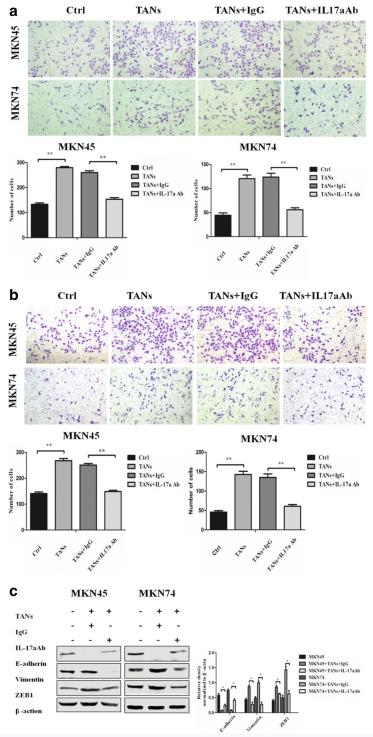 Fig.
2 Neutrophils enhance the migration, invasiveness, and EMT of GC cells through IL-17a. (Li S, et al.,
2019)
Fig.
2 Neutrophils enhance the migration, invasiveness, and EMT of GC cells through IL-17a. (Li S, et al.,
2019)
Gastric tumor cell lines are established by isolating and culturing cells directly from the tumors of GC patients. These cell lines are extensively characterized to ensure they faithfully represent the properties of the original tumors.
These include uncontrolled proliferation and disregard for normal growth signals; increased invasive and metastatic behavior; altered gene expression profiles, such as mutations in key oncogenes and tumor suppressor genes; metabolic reprogramming to support rapid growth and survival; increased expression of cell surface markers associated with cancer stem cells.
Some of the critical signaling pathways involved in this process include PI3K/Akt/mTOR, Ras/MAPK, Wnt/β-catenin, Notch signaling, and TGF-β/Smad pathways.
Filters Clear all filters
Species
- African clawed frog (1)
- American mink (1)
- Asian tiger mosquito (1)
- Atlantic salmon (1)
- Bluegill (2)
- Bluestriped grunt (1)
- Bovine (7)
- Brazilian free-tailed bat (1)
- Brown bullhead (2)
- Cabbage looper (1)
- Cabbage moth (6)
- Cat (4)
- Central mudminnow (1)
- Chicken (3)
- Chinese hamster (5)
- Chinook salmon (2)
- Chum salmon (1)
- Coho salmon (1)
- Common carp (2)
- Cotton-top tamarin (1)
- Dog (2)
- Fall armyworm (3)
- Fathead minnow (2)
- Fruit fly (1)
- Gilthead sea bream (2)
- Golden hamster (7)
- Goldfish (6)
- Gray dwarf hamster (1)
- Green monkey (2)
- Gypsy moth (1)
- Horse (1)
- Human (999)
- Japanese eel (1)
- Japanese rice fish (7)
- Koi carp (1)
- Mouse (315)
- Mouse x Gray dwarf hamster (1)
- Mouse x Rat (20)
- Northern pike (1)
- Pig (3)
- Rabbit (2)
- Rainbow trout (3)
- Rat (115)
- Rhesus macaque (1)
- Salt marsh moth (1)
- Sheep (2)
- Snakehead murrel (2)
- Sockeye salmon (1)
- Vervet monkey (2)
- Zebrafish (2)
Source
- Abdomen (1)
- Abdomen Metastasis (2)
- Adipose (2)
- Adrenal Gland (8)
- Adrenal Gland Metastasis (2)
- Aorta (4)
- Artery (1)
- Ascites (28)
- Ascites Metastasis (37)
- Bile Duct (3)
- Bladder (25)
- Bladder Metastasis (1)
- Blastocyst (1)
- Blastula (1)
- Blood (127)
- Bone (27)
- Bone Marrow (57)
- Bone Marrow Metastasis (18)
- Bone Metastasis (6)
- Brain (55)
- Brain Metastasis (8)
- Breast (30)
- Bronchus (1)
- Caudal Peduncle (1)
- Caudal Trunk (2)
- Cecum (3)
- Cerebrospinal Fluid (1)
- Cerebrospinal Fluid Metastasis (1)
- Cervix (32)
- Colon (90)
- Connective Tissue (7)
- Cornea (3)
- Cutaneous Metastasis (1)
- Dermis (2)
- Duodenum (1)
- Embryo (29)
- Endometrium (17)
- Esophagus (44)
- Eye (12)
- Eye Socket (5)
- Fetus (3)
- Fin (9)
- Foreskin (4)
- Gallbladder (1)
- Gingiva (2)
- Globe (2)
- Glomerulus (2)
- Groin (1)
- Head Kidney (2)
- Heart (4)
- Hemolymph (1)
- Hypodermis Metastasis (5)
- Ileum (1)
- Intestine (94)
- Jejunum (1)
- kidney (1)
- Kidney (27)
- Liver (35)
- Liver Metastasis (17)
- Lung (58)
- Lung Metastasis (8)
- Lymph Node (8)
- Lymph Node Metastasis (59)
- Muscle (7)
- Muscle Metastasis (2)
- Nose (2)
- Omentum Metastasis (2)
- Oral Cavity (10)
- Ovary (21)
- Ovary Metastasis (2)
- Pancreas (19)
- Pelvic Wall Metastasis (1)
- Pelvis (1)
- Perianal Space Metastasis (1)
- Pericardial Effusion (1)
- Pericardial Effusion Metastasis (2)
- Perineus (1)
- Peripheral Blood (126)
- Peripheral Nervous System (21)
- Peritoneal Effusion (2)
- Peritoneum (1)
- Peritoneum Metastasis (1)
- Pharynx (3)
- Pituitary Gland (7)
- Pleural Effusion (54)
- Pleural Effusion Metastasis (46)
- Prostate (7)
- Rectum (15)
- Renal Pelvis (1)
- Retroperitoneal Space (2)
- Salivary Gland (2)
- Skeletal Muscle (5)
- Skin (32)
- Skin Metastasis (3)
- Small Intestine (4)
- Small Intestine Metastasis (1)
- Smooth Muscle (2)
- Soft Tissue (1)
- Soft Tissue Metastasis (1)
- Spinal Cord (2)
- Stomach (4)
- Testis (15)
- Thoracic Cavity Metastasis (6)
- Thymus (5)
- Thyroid Gland (16)
- Thyroid Gland Metastasis (1)
- Tongue (5)
- Trachea (1)
- Umbilical Cord (1)
- Umbilical Cord Blood (1)
- Urachus (1)
- Ureter (1)
- Uterus (54)
- Uvea (2)
- Vagina (2)
- Vulva (1)
Disease
- Acute Biphenotypic Leukemia (1)
- Acute Erythroid Leukemia (4)
- Acute Megakaryoblastic Leukemia (4)
- Acute Monocytic Leukemia (9)
- Acute Myeloid Leukemia (25)
- Acute Promyelocytic Leukemia (2)
- Adrenal Gland Neuroblastoma (11)
- Adult B Acute Lymphoblastic leukemia (1)
- Adult B Acute Lymphoblastic Leukemia (6)
- Adult T Acute Lymphoblastic Leukemia (6)
- Adult T Lymphoblastic Lymphoma (2)
- Adult T-Cell Leukemia/Lymphoma (1)
- Alveolar Rhabdomyosarcoma (4)
- Alveolar Ridge Squamous Cell Carcinoma (1)
- Amelanotic Melanoma (3)
- Ampulla of Vater Adenocarcinoma (1)
- Ampulla of Vater Adenosquamous Carcinoma (3)
- Anaplastic Astrocytoma (3)
- Anaplastic Large Cell Lymphoma (7)
- Askin Tumor (1)
- Astrocytoma (5)
- B Acute Lymphoblastic Leukemia (2)
- B-Cell Non-Hodgkin Lymphoma (5)
- Bare Lymphocyte Syndrome Type 2 (1)
- Barrett Adenocarcinoma (2)
- Benign Prostatic Hyperplasia (1)
- Bladder Carcinoma (14)
- Bladder Squamous Cell Carcinoma (1)
- Bovine Leukemia (2)
- Breast Adenocarcinoma (4)
- Breast Carcinoma (9)
- Breast Ductal Carcinoma (2)
- Burkitt Lymphoma (17)
- Canavan Disease (1)
- Canine Histiocytic Sarcoma (1)
- Cecum Adenocarcinoma (3)
- Central Nervous System Lymphoma (2)
- Cervical Adenocarcinoma (2)
- Cervical Adenosquamous Carcinoma (2)
- Cervical Small Cell Carcinoma (1)
- Cervical Squamous Cell Carcinoma (2)
- Chicken Bursal Lymphoma (2)
- Childhood B Acute Lymphoblastic Leukemia (13)
- Childhood T Acute Lymphoblastic Leukemia (16)
- Childhood T Lymphoblastic Lymphoma (1)
- Cholangiocarcinoma (2)
- Chronic Eosinophilic Leukemia (1)
- Chronic Lymphocytic Leukemia (2)
- Chronic Myeloid Leukemia (23)
- Clear Cell Renal Cell Carcinoma (2)
- Colon Adenocarcinoma (55)
- Colon Carcinoma (34)
- Colorectal Adenocarcinoma (1)
- Colorectal Carcinoma (1)
- Congenital Pure Red Cell Aplasia (1)
- Cutaneous Melanoma (10)
- Dedifferentiated Chondrosarcoma (1)
- Desmoplastic Melanoma (1)
- Diffuse Large B-Cell Lymphoma (29)
- Down Syndrome (2)
- EBV-Related Burkitt Lymphoma (12)
- Embryonal Carcinoma (3)
- Embryonal Rhabdomyosarcoma (3)
- Endometrial Adenocarcinoma (13)
- Endometrial Adenosquamous Carcinoma (2)
- Endometrial Carcinoma (2)
- Endometrioid Stromal Sarcoma (1)
- Epithelioid Hemangioendothelioma (1)
- Epithelioid Sarcoma (3)
- Esophageal Adenocarcinoma (6)
- Esophageal Squamous Cell Carcinoma (41)
- Essential Thrombocythemia (1)
- Ewing Sarcoma (2)
- Extraskeletal Myxoid Chondrosarcoma (1)
- Fanconi Anemia (1)
- Fibrosarcoma (1)
- Follicular Lymphoma (2)
- Gallbladder Carcinoma (2)
- Gallbladder Undifferentiated Carcinoma (2)
- Gastric Adenocarcinoma (6)
- Gastric Adenosquamous Carcinoma (1)
- Gastric Carcinoma (5)
- Gastric Choriocarcinoma (1)
- Gastric Fundus Carcinoma (1)
- Gastric Signet Ring Cell Adenocarcinoma (1)
- Gastric Small Cell Carcinoma (2)
- Gastric Tubular Adenocarcinoma (5)
- Gastroesophageal Junction Adenocarcinoma (1)
- Gestational Choriocarcinoma (1)
- Gingival Squamous Cell Carcinoma (2)
- Glioblastoma (18)
- Gliosarcoma (1)
- Goldfish Erythrophoroma (4)
- Hairy Cell Leukemia (1)
- Hamster Kidney Tumor (1)
- Hamster Pancreatic Ductal Adenocarcinoma (1)
- Hamster Uterine Leiomyosarcoma (1)
- Hepatoblastoma (2)
- Hepatocellular Carcinoma (6)
- Hepatosplenic T-Cell Lymphoma (2)
- Hereditary Thyroid Gland Medullary Carcinoma (1)
- High Grade B-Cell Lymphoma (1)
- High Grade Ovarian Serous Adenocarcinoma (8)
- Hodgkin Lymphoma (9)
- Hypopharyngeal Squamous Cell Carcinoma (2)
- Infectious Mononucleosis (1)
- Intrahepatic Cholangiocarcinoma (6)
- Invasive Breast Carcinoma of No Special Type (12)
- Invasive Breast Lobular Carcinoma (1)
- Kidney Neoplasm (1)
- Kidney Rhabdoid Tumor (1)
- Krukenberg Tumor (1)
- Liposarcoma (1)
- Lung Adenocarcinoma (17)
- Lung Giant Cell Carcinoma (8)
- Lung Large Cell Carcinoma (9)
- Lung Mucoepidermoid Carcinoma (1)
- Lung Non-Small Cell Carcinoma (2)
- Lung Small Cell Carcinoma (25)
- Lung Squamous Cell Carcinoma (9)
- Lymphoblastic Lymphoma (1)
- Malignant Peripheral Nerve Sheath Tumor (1)
- Mantle Cell Lymphoma (5)
- Mature Gastric Teratoma (1)
- Maxillary Sinus Squamous Cell Carcinoma (1)
- Medaka Hepatoma (2)
- Medulloblastoma (3)
- Melanoma (24)
- Meningioma (2)
- Minimally Invasive Lung Adenocarcinoma (1)
- Monophasic Synovial Sarcoma (1)
- Mouse Bladder Transitional Cell Carcinoma (1)
- Mouse Chondrosarcoma (1)
- Mouse Colon Adenocarcinoma (3)
- Mouse Ependymoma (2)
- Mouse Erythroid Leukemia (13)
- Mouse Fibrosarcoma (5)
- Mouse Glioblastoma (1)
- Mouse Hemangioendothelioma (1)
- Mouse Hepatocellular Carcinoma (1)
- Mouse Insulinoma (3)
- Mouse Intestinal Tract Neuroendocrine Adenoma (1)
- Mouse Islet Cell Adenoma (1)
- Mouse Kidney Carcinoma (1)
- Mouse Leukemia (10)
- Mouse Leydig Cell Tumor (1)
- Mouse Lymphoma (8)
- Mouse Mammary Gland Malignant Neoplasm (23)
- Mouse Melanoma (9)
- Mouse Multiple Myeloma (5)
- Mouse Myeloid Leukemia (3)
- Mouse Neoplasm (1)
- Mouse Neuroblastoma (21)
- Mouse Oral Cavity Squamous Cell Carcinoma (1)
- Mouse Osteosarcoma (3)
- Mouse Pituitary Gland Neoplasm (1)
- Mouse Plasmacytoma (1)
- Mouse Precursor T Cell Lymphoblastic Lymphoma/Leukemia (2)
- Mouse Pulmonary Adenoma (1)
- Mouse Pulmonary Malignant Tumor (3)
- Mouse Pulmonary Squamous Cell Carcinoma (1)
- Mouse Rectum Carcinoma (2)
- Mouse Reticulum Cell Sarcoma (2)
- Mouse Sarcoma (1)
- Mouse Teratocarcinoma (8)
- Mouse Thymic Lymphoma (3)
- Mycosis Fungoides (1)
- Myelodysplastic Syndrome (1)
- Myxofibrosarcoma (1)
- Natural Killer Cell Lymphoblastic Leukemia/Lymphoma (2)
- Neuroblastoma (26)
- Oral Cavity Squamous Cell Carcinoma (15)
- Osteoid Osteoma (1)
- Osteosarcoma (15)
- Ovarian Carcinoma (1)
- Ovarian Clear Cell Adenocarcinoma (1)
- Ovarian Endometrioid Adenocarcinoma (4)
- Ovarian Granulosa Cell Tumor (1)
- Ovarian Mucinous Adenocarcinoma (2)
- Ovarian Serous Adenocarcinoma (2)
- Ovarian Serous Cystadenocarcinoma (2)
- Ovarian Small Cell Carcinoma (1)
- Pancreatic Adenocarcinoma (13)
- Pancreatic Carcinoma (5)
- Pancreatic Ductal Adenocarcinoma (12)
- Papillomavirus-Independent Cervical Squamous Cell Carcinoma (1)
- Papillomavirus-Related Cervical Adenocarcinoma (7)
- Papillomavirus-Related Cervical Squamous Cell Carcinoma (4)
- Papillomavirus-Related Endocervical Adenocarcinoma (16)
- Paroxysmal Nocturnal Hemoglobinuria (3)
- Pharyngeal Squamous Cell Carcinoma (1)
- Plasma Cell Myeloma (15)
- Pleural Epithelioid Mesothelioma (5)
- Pleural Sarcomatoid Mesothelioma (2)
- Poorly Differentiated Thyroid Gland Carcinoma (1)
- Primary Cutaneous T-Cell Non-Hodgkin Lymphoma (1)
- Primary Effusion Lymphoma (7)
- Primitive Neuroectodermal Tumor (1)
- Prostate carcinoma (1)
- Prostate Carcinoma (9)
- Rat C-Cell Carcinoma (1)
- Rat Cholangiocarcinoma (1)
- Rat Colon Adenocarcinoma (5)
- Rat Digestive System Neoplasm (1)
- Rat Fibrosarcoma (1)
- Rat Hepatocellular Carcinoma (20)
- Rat Histiocytic Sarcoma (1)
- Rat Insulinoma (2)
- Rat Leukemia (1)
- Rat Leydig Cell Adenoma (1)
- Rat Lung Carcinoma (1)
- Rat Malignant Glioma (4)
- Rat Malignant Meningioma (1)
- Rat Malignant Oligodendroglioma (2)
- Rat Malignant Thymoma (3)
- Rat Mammary Gland Adenocarcinoma (10)
- Rat Neuroblastoma (3)
- Rat Osteosarcoma (2)
- Rat Pituitary Gland Neoplasm (6)
- Rat Prostate Adenocarcinoma (3)
- Rat Rhabdomyosarcoma (1)
- Rat Sarcoma (2)
- Rat Squamous Cell Carcinoma (1)
- Rat Urinary Bladder Transitional Cell Carcinoma (2)
- Rat Urinary System Neoplasm (6)
- Rectal Adenocarcinoma (13)
- Rectosigmoid Adenocarcinoma (1)
- Recurrent Bladder Carcinoma (1)
- Renal Cell Carcinoma (7)
- Renal Pelvis Urothelial Carcinoma (1)
- Retinoblastoma (11)
- Sacral Chordoma (1)
- Sacrococcygeal Teratoma (1)
- Salivary Gland Squamous Cell Carcinoma (1)
- Sezary Syndrome (1)
- Shwachman-Diamond Syndrome (1)
- Skin Squamous Cell Carcinoma (2)
- Splenic Marginal Zone Lymphoma (1)
- Testicular Embryonal Carcinoma (8)
- Testicular Teratoma (2)
- Testicular Yolk Sac Tumor (1)
- Thyroid Gland Anaplastic Carcinoma (10)
- Thyroid Gland Follicular Carcinoma (4)
- Thyroid Gland Papillary Carcinoma (3)
- Thyroid Gland Sarcoma (1)
- Thyroid Gland Squamous Cell Carcinoma (2)
- Tongue Adenosquamous Carcinoma (1)
- Tongue Squamous Cell Carcinoma (6)
- Type I Endometrial Adenocarcinoma (1)
- Ureter Urothelial Carcinoma (1)
- Uterine Carcinosarcoma (2)
- Uterine Corpus Leiomyosarcoma (1)
- Uterine Corpus Sarcoma (2)
- Uveal Melanoma (2)
- Vaginal Melanoma (2)
- Vulvar Melanoma (1)
- Vulvar Squamous Cell Carcinoma (1)
Description: Species: human female 55 years old; Tissue: colon; Tumor: adenocarcinoma
Description: Species: human, Caucasian female 82 years old; Tissue: colon; Tumor: adenocarcinoma, grade IV
Description: Established from the poorly differentiated adenocarcinoma of the stomach (medullary type) of a ...
Description: The Cisplatin-resistant cell line MKN-45/DDP has been developed by repeatedly exposing the parent ...
Description: The Oxaliplatin-resistant cell line MKN-45/L-OHP has been developed by repeatedly exposing the ...
Description: Established in 1989 from the primary tumor of a 72-year-old Hispanic man with a poorly ...
Description: Species: human female 69 years; Tissue: colon; Tumor: carcinoma; Derived from: pelvic wall ...
Description: Human cell line derived from stomach cancer (gastric cancer; highly differentiated tubular ...
Description: Rectal carcinoma. Culture cell line of SCC.
Description: Human gastric cancer cell line derived from metastasis at liver.
Description: Human cell line derived from gastric cancer. Established from the cells in ascites.
Description: Human cell line derived from stomach cancer.
Description: Human cell line derived from signet ring cell carcinoma of stomach.
Description: Human cell line derived from intraperitoneal metastasis of gastric cancer
Description: Human cell line derived from gastric cancer
Description: Stomach cancer, but producing hybrid type of alkaline phosphatase.
Description: Stomach cancer, but producing Nagao-type alkaline phosphatase.
Description: Japanese gastric cancer, lymph node metastated.
